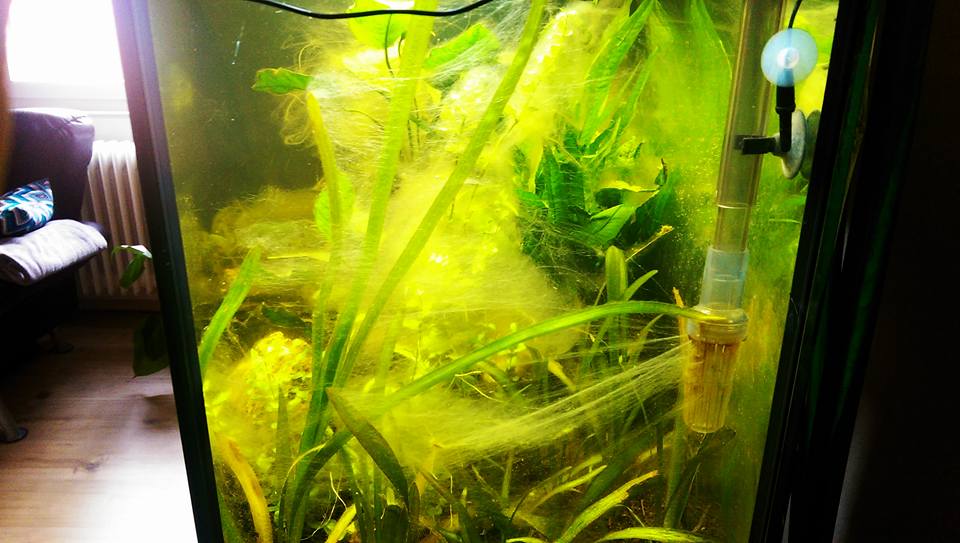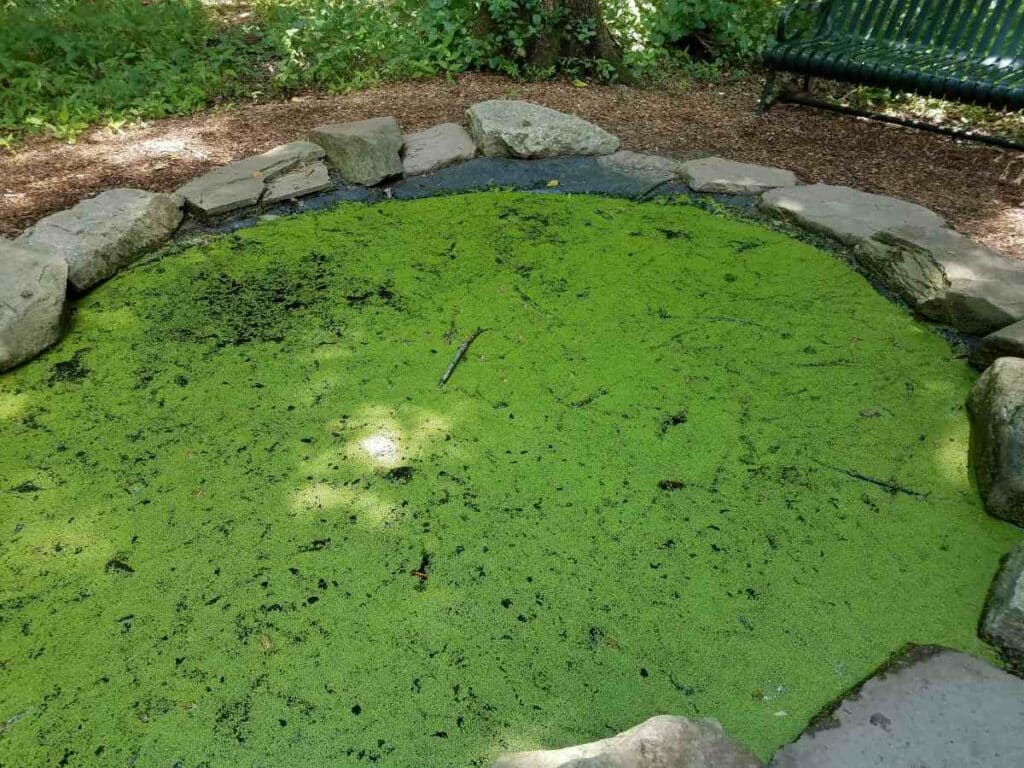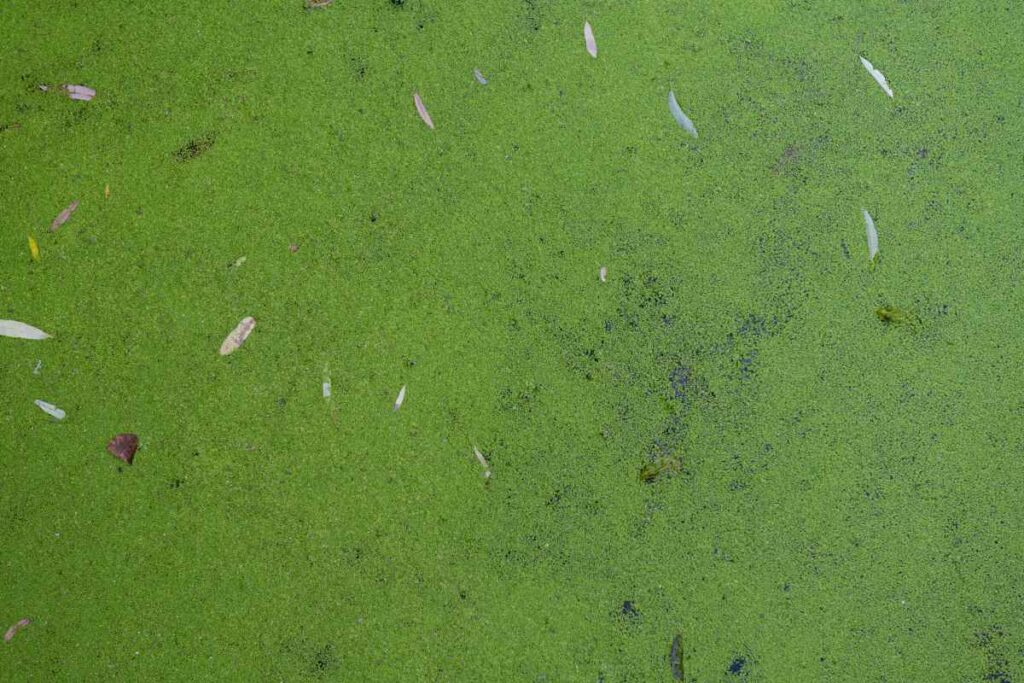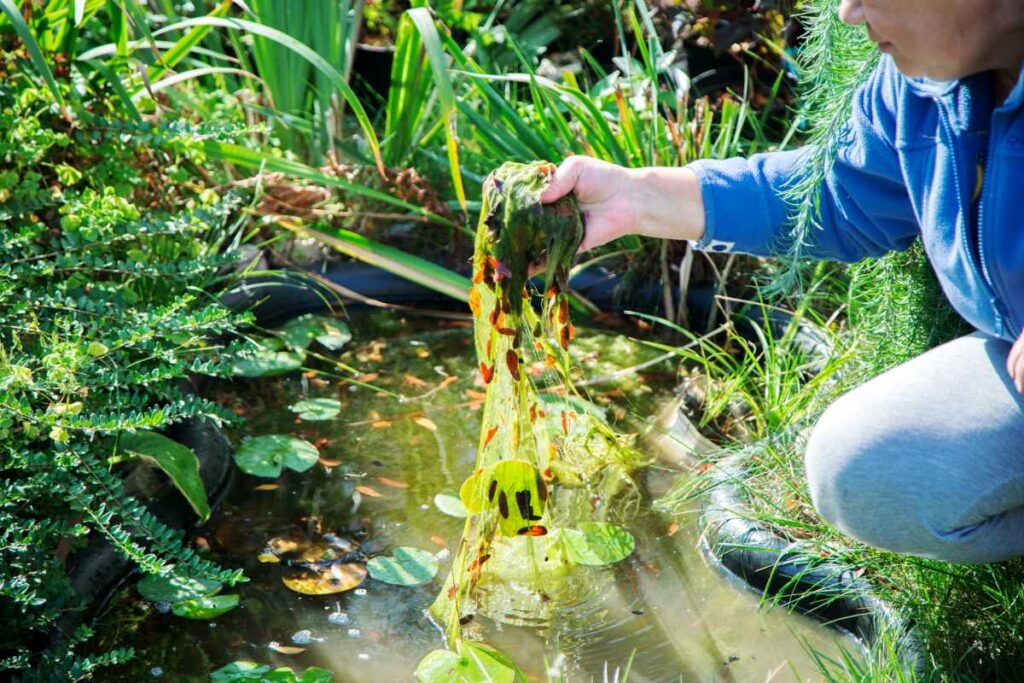the essentials in brief
Filamentous algae can be controlled through manual removal, use of predators, and control of nutrients. More tips here.
Filamentous algae can lead to problems such as lack of oxygen, stunted aquatic plant growth and more. More information here.
High nutrient levels in the water, especially phosphate and nitrate, warm temperatures and lots of sunlight favor this growth of filamentous algae.
Filamentous algae are a common occurrence in many bodies of water and aquariums and can lead to a unsightly problem that not only affects the aesthetics, but also the water quality and that disturb ecological balance can.
In this article we will show you what can be done against thread algae, how harmful they can be and what factors promote their growth.
What are thread algae?

Filamentous algae are a group of algae that got their name from their long, filamentous structure. They belong to the department of green algae (Chlorophyta) and are in freshwater and saltwater environments widespread.
key fact box
Filamentous algae can come in a variety of colors, including green, blue-green, brown, and red. They are microscopic and often form filamentous, web-like structures that can appear in dense mats or carpets.
thread algae can in almost every type of water be found, be it in ponds, lakes, rivers, streams or in aquariums. They usually are sessile, which means they attach themselves to surfaces and can grow on rocks, aquatic plants, underwater structures, and other substrates.
Because of your adaptability and rapid multiplication, they can spread rapidly under the right conditions, overgrowing other aquatic plants and organisms.
Filamentous algae play an important role in the ecological balance of bodies of water. They are primary producers and participate in photosynthesis, converting light energy into chemical energy and producing oxygen.
In moderate amounts they contribute to the food base for aquatic organisms and provide habitat for small aquatic animal species such as microorganisms and insect larvae.
However, thread algae can also become a problem, when they multiply excessively and appear in large numbers. Such overgrowth is called "algal bloom" bezeichnet.
These algal blooms can do that water bodies green or cloudy appear and reduce the depth of view. Not only do they impair the aesthetics of the body of water, but they can also have negative effects on the water quality and the aquatic community.
Algae are so harmful
The harmfulness of thread algae depends on several factors, including the type of algae, growth stage and environmental conditions. In small quantities, thread algae are usually not harmful and can even contribute to the ecological balance by bind nutrients and as a habitat for small creatures serve.
However, problems arise when the algae multiply massively and form large carpets. In such cases, thread algae negative impacts to have:
- Reduction of the oxygen content: In the case of massive growth of algae, the algae can produce a large amount of oxygen when they are active during the day through photosynthesis. But at night, or when the algae die and rot, they use up oxygen and can lead to a lack of oxygen in the water. This can cause problems for fish and other aquatic life that depend on adequate oxygen.
- Blockage of filters and lines: Filamentous algae can accumulate in filters and pipes and clog them. This affects the performance of filtration systems and can lead to insufficient purification of the water.
- Deterioration in water quality: The massive growth of algae causes the water to turn green and cloudy. Not only does this have an aesthetic impact, but it can also reduce the light transmission of the water, which in turn can affect the growth of aquatic plants.
- competition for nutrients: The rapid growth of algae can lead to increased competition for nutrients, which can have a negative impact on other plants and organisms in the water body.
Additional information: Some species of filamentous algae are capable of producing toxins that can be harmful to fish and other aquatic life.
In order to control algae growth and avoid negative effects, it is important to take preventive measures and carry out regular water inspections.
This favors their growth

Changing the water chemistry can also affect the growth of filamentous algae. A high nutrient content in the water, especially of phosphate and nitrate, favors the growth of algae.
It is therefore important to control and, if necessary, reduce the nutrients in the water. The use of plants in the body of water can help absorb excess nutrients and reduce algae growth.
The Light is another important factor affecting the growth of filamentous algae. Algae need light for the photosynthesis, so they prefer to grow in well-lit areas.
An Reduction of light exposure can therefore inhibit algae growth. This can be achieved by using floating plants, installing shade netting, or planting trees and shrubs near the body of water.
An Over-fertilization the surrounding areas can also lead to increased nutrient input into the water body and thus promote algae growth. It is therefore important to control and, if necessary, reduce the use of fertilizers in the vicinity of the water body.
The way food is water temperature plays a role in algae growth. Filamentous algae usually prefer warmer temperatures, so they can grow particularly strongly in the warmer months of the year. A targeted one temperature reduction of the body of water can inhibit algae growth.
Prevent thread algae: 7 important steps

In order to prevent thread algae, you have to take good care of your water. In addition we recommend 7 essential steps:
- Regular cleaning of the body of water to remove dead algae and other organic deposits.
- Control of the nutrients in the water through targeted fertilization and the use of plants that can absorb excess nutrients.
- Use of fish and other creatures that eat filamentous algae and thus limit algae growth.
- Reducing the incidence of light through the use of plants or shade nets.
- Avoiding the use of chemicals unless it is the only viable solution.
- Checking aquatic plants for the presence of filamentous algae before introducing them into the water body.
- Regular monitoring of the water quality in order to be able to react to changes at an early stage.
Tip: Loricariidae, tetras, flag cichlids and some shrimp eat thread algae - they will definitely find a place in your pond!
A comprehensive consideration of the ecological factors and a targeted adjustment of the care and management measures can help to control the growth of algae and a healthy ecological balance maintained in the water.
Algae growth in the garden pond: strategies against thread algae
Filamentous algae control requires balanced management and a combination of different measures. Regular cleaning of the water, control of nutrients, use of predators and reducing light exposure are some of the ways to limit algae growth.
As primary producers, they contribute to the food base for various aquatic organisms and provide habitat for many microorganisms. In moderate amounts they are a natural part of water bodies and contribute to the stability of the ecological balance.


